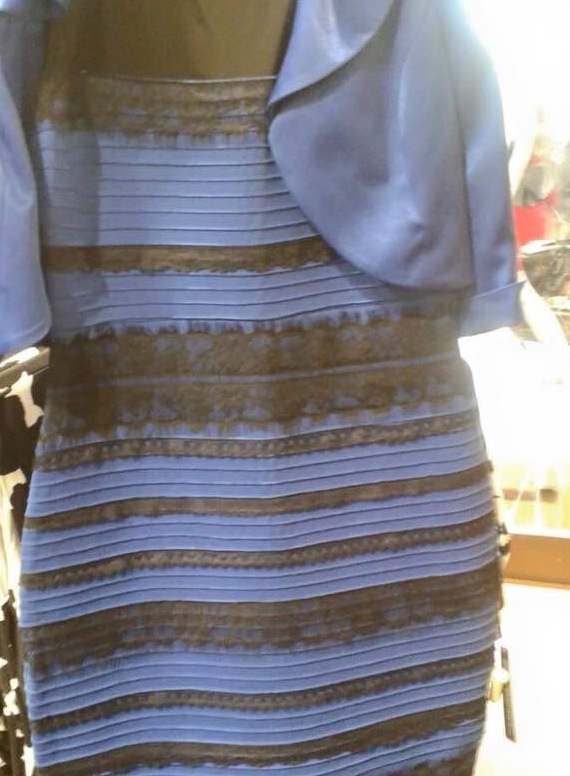![635605843196354135-Screen-Shot-2015-02-26-at-9.51.11-PM[ID=24095185] ID=24095185](http://www.gannett-cdn.com/-mm-/2b9dbb3035209157f65050a0b982db178fbc23e0/c=0-15-569-502/local/-/media/2015/02/26/USATODAY/USATODAY/635605843196354135-Screen-Shot-2015-02-26-at-9.51.11-PM.jpg) The debate over whether "the dress" is blue/black or white/gold continues, but there's real science behind why we see it differently.
The debate over whether "the dress" is blue/black or white/gold continues, but there's real science behind why we see it differently.
It's all about perception.
Everyone sees the world differently, and that includes how we interpret color.
"Color is our perception — our interpretation of the light that's in the world," says Arthur Shapiro, a professor at American University who specializes in visual perception.
"Individual wavelengths don't have color, it's how our brains interpret the wavelengths that create color," he says. In the case of the dress, some of usour brains interpret those wavelengths to be blue and black, and others interpret the wavelengths as white and gold.
"In reality, it's light coming off of the computer screen, and then our brain interprets it and those interpretations can differ," according to Shapiro.
Rods and cones
But differences in perception don't tell the whole story.
Reena Garg, an ophthalmology professor, says you also have to understand the science of how people view color — and how that, in turn, can be affected by the lighting of a photograph. Cells in our eyes are light sensitive and help us tell the difference between color and shade, Garg, of the New York Eye and Ear Infirmary of Mount Sinai, said in an e-mail. Those cells are called rods and cones, she says.
"The cones are color sensitive, specifically to red, green and blue. The rods are shade sensitive and see black and white," according to Garg.
In dim light, our rods are activated to help us see contrast, and in bright light, our cones are activated to help us discern color, Garg says. Our retinas sends messages from rods and cones to our brain.
No one is wrong, no one is right
Yes, the actual dress is black and blue (it's for sale from a retailer in the United Kingdom), but the image of the dress that started this debate isn't as easily categorized.
"This photograph was probably taken on a phone camera and is very poorly exposed," Garg wrote. The colors people see are dependent on whether their retinas interpret this photo as overexposed or underexposed, according to Garg.
People who see black and blue are probably seeing the photo as overexposed, she said. And people who see the dress as white and gold, are probably seeing the photo as underexposed.
Shapiro says he sees white and gold. His wife sees blue and black.
"The amazing part is that there aren't more images like this dress," Shapiro says. There are many examples of this out in the world, he says, but this one just happened to hit the Internet.
Follow @lagrisham on Twitter
Also see:


